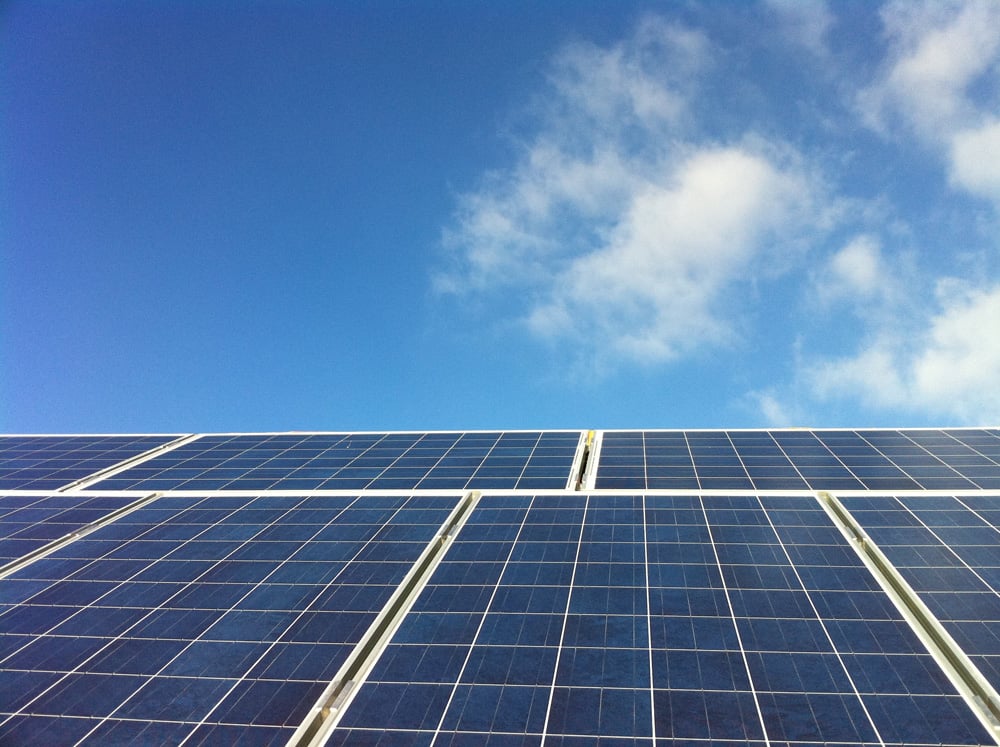
ENGIE Fabricom is aiming to complete a 14.2MW solar farm in Northern Ireland by February 2018 in one of the last projects to be built before the final deadline of the region’s Renewables Obligation a month later.
The solar farm will be built near Donaghcloney, around 20 miles south west of Belfast, using the final tranche of NIROC subsidy.
The project will have a maximum export capacity of 8.5MW, with maximum installed inverter capacity of 9MW and a total DC installed capacity of 14.2MW.
The requirements of Northern Ireland Electricity (NIE) mean that the project will also be controlled by the distribution network operator (DNO) should it need to be curtailed at times of system stress.
As Bram Claeys, business development manager at ENGIE Fabricom, explained to Solar Power Portal this is commonplace in site’s across the entire island.
“The Irish grid is small and the interconnection is quite poor as it is an island, so the dynamics of the [site] and the grid need to work together and the requirements from the grid operator need to be more strict,” he said.
“They need to be able to control the site itself so there's a power plant controller (PPC) installed on the site, so the project can be steered by the DNO. All elements present – the monitoring system, the inverters – need to be well aligned in order to respond at the speed that NIE requires.
“It's a feature of developing in Northern Ireland otherwise it doesn't work.”
Similar methods are now being employed by a number of the UK’s DNOs, who are deploying active network management (ANM) systems throughout the country to control ‘flexible connections’.
UK Power Networks, for example, now routinely offers these flexible distributed generation (FDG) connections in exchange for cheaper and quicker connection offers, saving £70 million in deferred upgrade works.
Claeys added: “It’s seen as a feature that will be required for future installations on mainland Europe because of the higher installed capacity of decentralised generation, and in Ireland because of the small grid it's already the case.”
Not yet at subsidy free development stage
Since the close of the NIROC regime, which came into force on 1 April 2017, developers will now be seeking ways to develop subsidy free solar in Northern Ireland, much in the same way they are in the rest of the UK.
However Claeys believes new development opportunities may lie south of the border in light of the Republic of Ireland’s recently launched consultation on the draft Renewable Electricity Support Scheme.
“I think that it will be as difficult in Northern Ireland as in the UK. What I would expect, if the consultation backs solar, that sites in the Republic of Ireland will be live earlier than those in Northern Ireland,” he said.
“Whether solar will be able to compete successfully with the other technologies remains to be seen, but surely for the sites with the lesser of the difficulties that you might expect – grid connection, straight forward sites – it will be survival of the fittest sites.”
He added that solar may benefit from the suggestion within the consultation that more refined auctions may take place whereby ‘viability gaps’ are taken into account when awarded government support.
However, Claeys also commented that it remains unclear what subsidy free projects will emerge across the UK and Ireland. While corporate PPAs could speed up the transition towards unsubsidised projects becoming the norm, prices are still not low enough for ENGIE Fabricom to work on grid connected projects without government support.
The same is true of large scale storage, which the company is said to be watching closely for it to reach a more attractive price point.
“We're keeping a close eye on large scale storage but just don't have the market yet to go at full throttle. We're an EPC; we need to build and so of course we dream about storage and building that out but it is just not at the price level we want it to be to make it happen.
“It's a nice thing but it's just too expensive still.”
